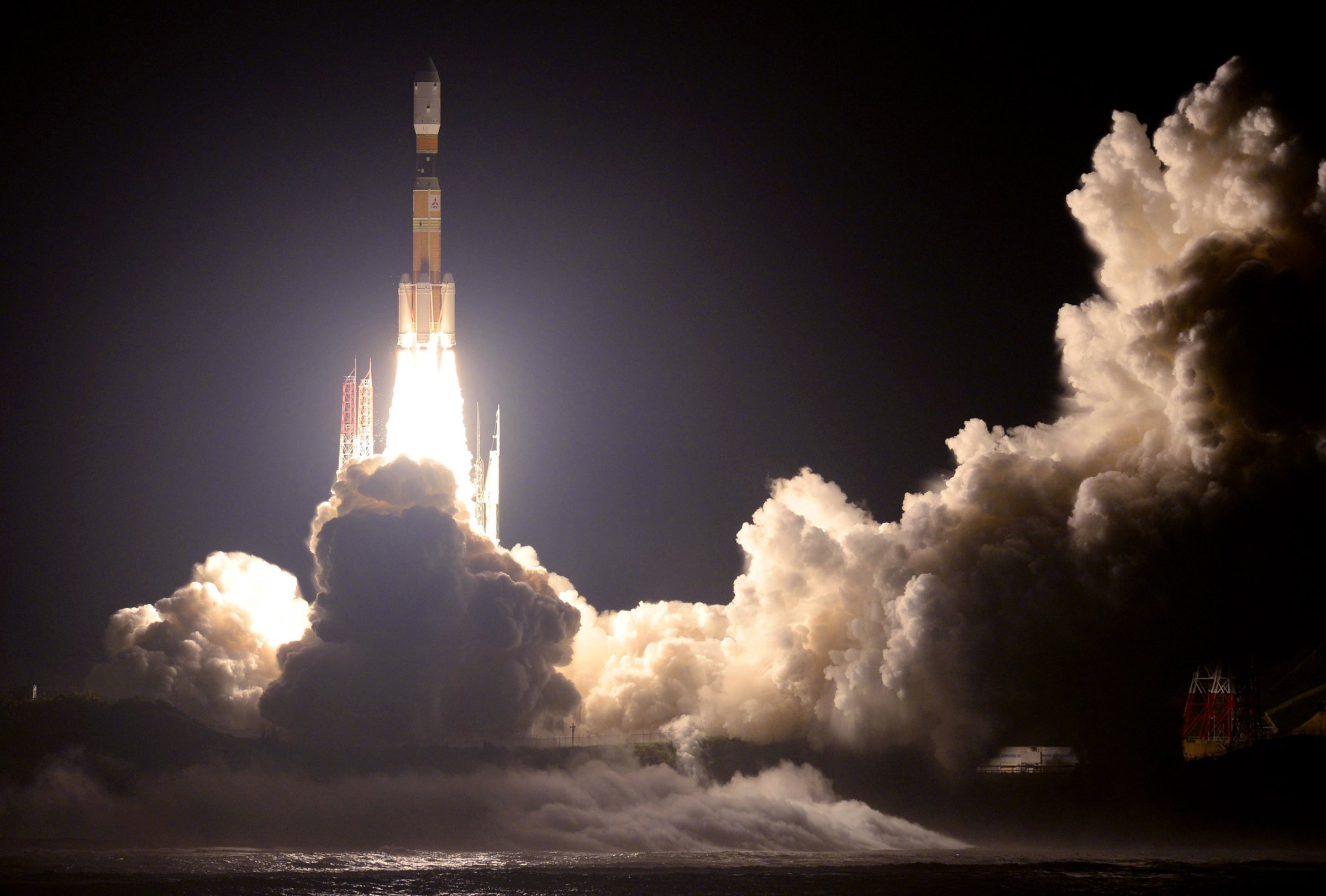
On Aug. 19, a white stork carried 14 doves and 12 mice to low-Earth orbit. Every word in that sentence is entirely true—but it does take some explaining.
The thing that actually flew to space was less lyrically known as an H-II launch vehicle, a 164-ft. (5o m) rocket built by the Japanese Aerospace Exploration Agency (JAXA)—or Japan’s NASA. The H-II is a nifty ship, a liquid fueled booster carrying a cargo vessel that has both pressurized and unpressurized compartments, meaning it can carry both inert and living payloads (animals only, no people).
The craft was launched on a supply run to the International Space Station (ISS), and it comes in the nick of time. It’s been a bad year for ISS supply ships, with both an Antares vessel and a Dragon vessel—built by Orbital Sciences and SpaceX respectively—being destroyed in launch accidents, and a Russian Progress ship reaching orbit but plunging into the atmosphere without ever making it to the station. Space station crews are well supplied with essentials like basic foods, water and breathable oxygen, but relative luxuries like fresh food, changes of clothes and packages from home—to say nothing of new scientific experiments and equipment—require regular resupply trips. And the H-II is carrying plenty.
Included in its 6.5 tons of cargo are 600 liters (159 gallons) of potable water; a processing unit for purifying and recycling urine; an experiment known as the Calorimetric Electron Telescope (CALET), which will be mounted on the exterior of the station to study the nature of cosmic radiation, as well as to look for signs of the elusive dark matter that makes up 87% of the mass in the universe.
MORE: Watch TIME’s remarkable series covering a record-breaking mission to space
Also on the flight manifest are 14 miniature satellites known as cubesats, built by Planet Labs, a San Francisco-based company. They are designed to beam down high-resolution images of Earth to paying customers, and are part of an overall fleet of 101 the company plans to loft. But since “cubesat” lacks a certain lyricism, the company calls the little satellites Doves.
The white stork, similarly, is a poetic liberty. It is the cargo vehicle itself, which is technically known as the HTV, but is called Kuonotori—white stork—in Japanese, as a nod to the delivery function it was built to serve. As for the mice? They’re real, a part of ongoing studies of how organisms adapt to zero-gravity.
The stork still has some work ahead of it before it completes its mission. It will not have finished navigating its way to the ISS until Aug. 24. After it safely docks and is unloaded by the crew, it will detach, plunge through the atmosphere and incinerate. In space, a pretty nickname takes you only so far. After that, alas, hardware is nothing but hardware.
More Must-Reads from TIME
- Cybersecurity Experts Are Sounding the Alarm on DOGE
- Meet the 2025 Women of the Year
- The Harsh Truth About Disability Inclusion
- Why Do More Young Adults Have Cancer?
- Colman Domingo Leads With Radical Love
- How to Get Better at Doing Things Alone
- Michelle Zauner Stares Down the Darkness
Write to Jeffrey Kluger at jeffrey.kluger@time.com